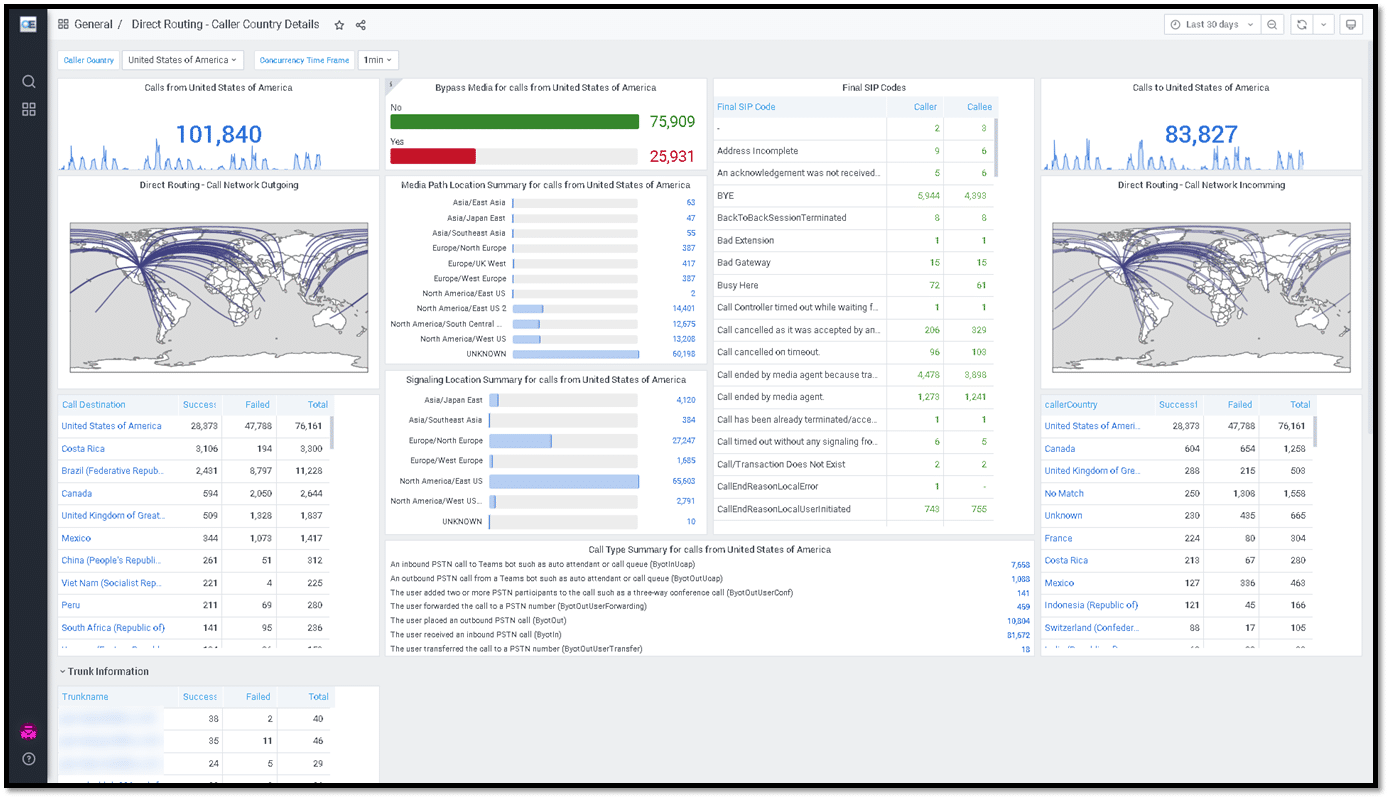OfficeExpert Use Case
Proactive Improvements for PSTN Direct Routing in Teams
Using Direct Routing Gateways for Teams / PSTN Integration
The cost benefits for choosing Teams Phone System instead of renewing legacy PBX voice solutions are obvious. Many organizations are reducing their Telecom spend and transitioning to Teams as their everyday telephony system for internal and external calling. But that requires the integration with the public switched telephone network (PSTN) for connectivity to the outside telecom world. To make that happen, most organizations choose to use Direct Routing as a controlled and configurable integration method leveraging gateways (aka Session Border Controllers, or SBCs) to handle the traffic going between Teams and the PSTN backbone.
Business Challenge for Monitoring SBC Gateway Issues
And just like any California freeway, these SBC gateways can become overloaded during peak traffic times. These bottlenecks usually occur during the mid-morning hours when overlapping time zones have more employees making calls. And traditional network monitoring tools aren’t much help. They are optimized for LAN/WAN traffic at data centers and centralized office locations. Those tools don’t identify dropped calls from SIP errors at the SBC gateways or call jitter from dropped packets. That leaves IT operations teams relying on the Call Quality Dashboard (CQD) reports which are limited.
The biggest challenge with identifying Direct Routing problems that cause call quality issues is 100% related to the lack visibility into the voice traffic at these gateways during peak business hours. Understanding the concurrent network traffic being routed to which gateways and how those gateways are handling the throughput is essential. This is typically the source of call quality problems, as many issues can exist in the network elements involved between the SBCs, such as the following:
- Links can get overloaded during peak traffic times and drop packets
- Gateway devices can get overloaded and drop packets
- Load balancing and multiple route-paths can cause out-of-order packets
- Route patterns can change, causing latency and jitter swings
New Approach to Spotlight SBC Gateway Issues
To monitor Teams / PSTN call traffic effectively it is imperative that you see the complete picture. The new version of OfficeExpert TrueDEM gathers all the detailed metrics for call traffic passing through the SBC gateways. This includes the number and duration of calls, the type of calls, and of course the SIP codes from the handoff to the telecom providers (SIP trunk lines). Together this holistic viewpoint provides end-to-end visibility to quickly identify the chokepoints causing call quality issues.
OfficeExpert TrueDEM empowers IT operations to consistently monitor call traffic conditions, even for enterprise organizations with office locations in different geographical areas. From a single-pane-of-glass an IT administrator can quickly identify users experiencing call quality issues with PSTN inbound or outbound calls. And using a filtered view of the data it’s possible to zero in on the SBC gateways that are managing a heavy traffic load during peak hours. These are likely the bottlenecks that cause poor call quality or just drop connections altogether.
Business Value Goals from Improved Direct Routing
If IT operations can fix digital experience issues proactively then they become IT heroes. But they require the actionable insights to clearly identify the root cause of the problems at specific SBC gateways so they can be upgraded, patched, or load balanced. Organizations that engage in this type of proactive Teams call quality monitoring will quickly identify issues that can be rectified before the affected users call the helpdesk. This saves on troubleshooting time and empowers the IT support group to be proactive instead of reactive.
In addition, OfficeExpert TrueDEM allows the detailed performance metrics to be exported to evaluate fluctuations in performance changes over time. If there is a large difference in call traffic patterns at SBC gateways, or more SIP error codes, that information can be combined with additional metrics showing packet loss or Jitter to understand which direct routing paths need to be analyzed more closely.
